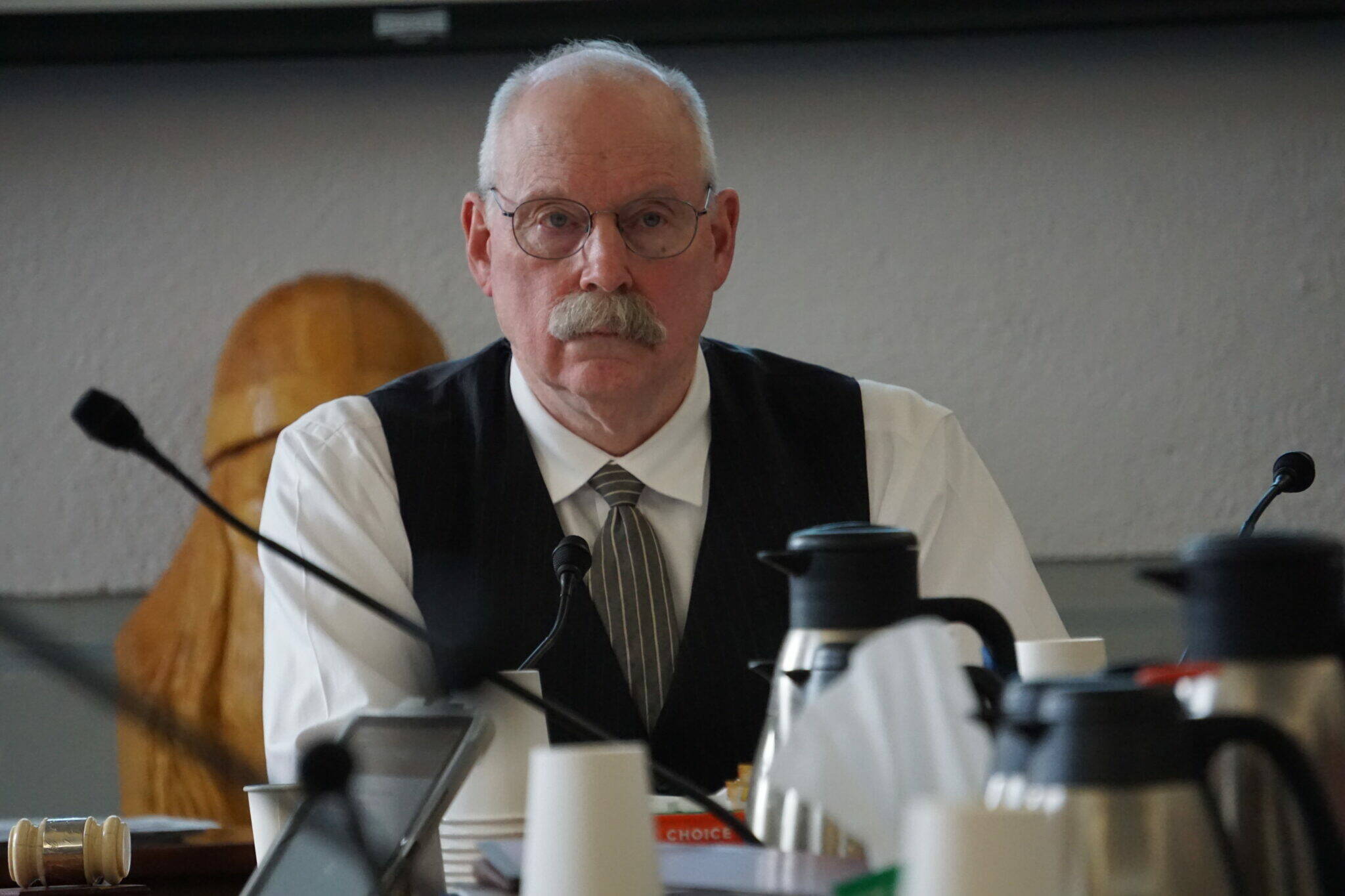The Alaska Senate is moving toward a final vote on its draft state spending plan for the coming fiscal year, with lawmakers expected to vote next week on a proposal that includes enough money to pay a 2024 Permanent Fund dividend estimated to be $1,580 per recipient.
The Senate’s draft operating budget is different from one passed earlier this month by the House which included a $2,270 proposed PFD.
Senate action will trigger the creation of a conference committee charged with writing a compromise budget deal to fund state services after July 1, the start of the fiscal year.
The state budget is the Legislature’s only constitutionally required duty, and it’s typically among the most contentious items on the legislative calendar.
It isn’t certain whether that will be the case this year. Large policy battles — over education, a looming Railbelt energy crunch, and crime legislation — still await lawmakers, and there are relatively few differences between the House and Senate spending plans.
“I think most of the issues, honestly, this year, won’t be budgetary. I think they’ll just be more legislative. I think there are going to be policy-driven deals to get us out of here, more so than budgetary,” said Sen. David Wilson, R-Wasilla.
Sen. Bert Stedman, R-Sitka and co-chair of the Senate Finance Committee in charge of the operating budget, said that when it comes to differences between House and Senate on the budget, the Permanent Fund dividend is “the big elephant in the middle making a mess.”
The key difference between the House and Senate plans, lawmakers say, is the way they spend a small surplus anticipated at the end of the current fiscal year, which expires June 30.
Last year, Gov. Mike Dunleavy vetoed $200 million from the budget passed by Legislators. That cut, plus higher-than-forecast oil revenue, is expected to result in a surplus when the fiscal year ends.
The House plans to divert most of that surplus to an “energy relief” payment included in its proposed PFD.
But senators believe the House plan is unrealistic. When combined with other state spending, including on construction projects and pending legislation, the House plan is in deficit by about $270 million, said Alexei Painter, director of the Legislature’s budget analysis department.
“In order to make the appropriations they have work, they need to find $270 million of reductions somewhere,” Painter said in response to a question from Stedman.
So far, those reductions haven’t materialized.
Sen. Lyman Hoffman, D-Bethel, said that spending from savings — specifically the state’s Constitutional Budget Reserve — could cover the gap. Doing so would require three-quarters of the House and three-quarters of the Senate to agree.
“I think that it’s highly improbable to tap the CBR vote in the Senate,” Hoffman said.
The Senate’s proposal includes estimates of $222 in energy relief atop a $1,360 dividend in order to close the gap in the House’s plan.
The energy relief money would come from the current year’s budget; the money to pay for the ordinary dividend would come from the budget that starts July 1.
In addition to the differences in the energy relief payment amount, the chambers differed on the ordinary dividend. The House’s proposal is equal to roughly 30% of the state’s annual draw from the Permanent Fund, while the Senate amount is equal to 25%, the same level as last year.
In March, the Department of Revenue estimated that the state will have approximately $6.45 billion in general-purpose revenue to spend between July 1, 2024 and June 30, 2025. The Senate’s plan spends all of that money and ends with a small deficit — less than $7 million — under current projections.
In the fiscal year that ends June 30, the state expects to have $6.59 billion in general purpose revenue. The Senate plan spends all but $113 million of that figure.
The predicted surplus could be soaked up by new legislation or labor contract negotiations, or spent on items that would ease final budget negotiations.
“If there’s nothing added, that whole 113 could be potentially moved over into energy relief or something else in conference committee,” Painter said.
If not, the extra money will be deposited into the CBR after the fiscal year ends.
• James Brooks is a longtime Alaska reporter, having previously worked at the Anchorage Daily News, Juneau Empire, Kodiak Mirror and Fairbanks Daily News-Miner. This article originally appeared online at alaskabeacon.com. Alaska Beacon, an affiliate of States Newsroom, is an independent, nonpartisan news organization focused on connecting Alaskans to their state government.

